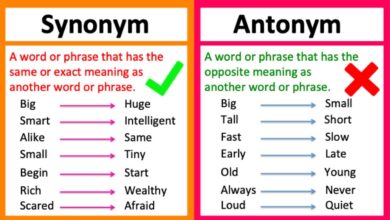Kar to Find the Y Intercept: A Simple Step-by-Step Guide

Table of Contents
Understanding how to find the y intercept in a graph can seem tricky at first, but with a simple process, you’ll be able to do it in no time. When you hear “kar to find the y intercept,” it’s just a fun way to explain how you can find where a line crosses the y-axis. The y intercept is the point where the line intersects the vertical y-axis, and it is usually denoted as “b” in a line equation. To find it, you just need the slope and one point on the line, or sometimes even an equation. This can be done in a few steps, and it’s not as hard as it sounds! Whether you’re working with a graph or an equation, the y intercept is easy to identify if you know the right method.
Once you understand the basics, finding the y intercept becomes a simple process. One of the most common ways to find the y intercept is by using the slope-intercept form of an equation. This equation looks like “y = mx + b,” where “m” represents the slope and “b” is the y intercept. If you’re given the slope and a point on the line, you can easily substitute these values into the equation and solve for “b.” The process of substitution helps you find the exact point where the line crosses the y-axis. Whether you’re working with a graph, a table of points, or just an equation, you can use these steps to find the y intercept accurately.
What Does “Kar to Find the Y Intercept” Really Mean?
The phrase “kar to find the y intercept” may sound confusing at first, but it’s just a fun and easy way to talk about finding the y intercept of a graph or equation. In mathematics, the y intercept is the point where a graph crosses the vertical y-axis. It’s a key concept when dealing with linear equations, and you’ll often need to find this point to better understand how a line behaves on a graph. “Kar” might not be a standard math term, but it could be a playful reminder to “carve” or “track” the y intercept by following a simple method. By following a few simple steps, like using the slope or substituting points into an equation, you can easily find the y intercept without much effort. Once you know how to identify it, you’ll realize it’s just a simple process to find the spot where the line crosses the y-axis. Understanding this concept is a great way to help with graphing lines and solving problems involving equations.
Understanding the Y Intercept: A Quick Overview
The y intercept is a vital concept in algebra and is used to describe where a line crosses the y-axis. The y-axis is the vertical axis on a graph, and the point where the line touches or crosses this axis is the y intercept. For any straight line, the y intercept will always be the value of y when x equals zero. This is because the x-coordinate of the point on the y-axis is always zero. In simple terms, to find the y intercept, you need to figure out the point on the line where it meets the y-axis. It is also an essential component in the slope-intercept form of a linear equation, which is written as y = mx + b. In this equation, “m” represents the slope of the line, and “b” is the y intercept. When the equation is in slope-intercept form, it’s easy to identify the y intercept as the “b” value. The y intercept gives valuable information about how a line is positioned on a graph and is often used to predict the behavior of linear relationships.
How to Find the Y Intercept Using an Equation
Finding the y intercept using an equation is one of the easiest methods, especially when the equation is written in slope-intercept form. The slope-intercept form is a type of equation that looks like y = mx + b, where “m” represents the slope and “b” is the y intercept. To find the y intercept, simply substitute the value of x with zero and solve for y. This is because the y intercept occurs when the value of x is zero, and at this point, the equation will give you the value of y where the line crosses the y-axis. For example, if you have the equation y = 2x + 4, substitute x with zero, and you’ll get y = 2(0) + 4, which simplifies to y = 4. Therefore, the y intercept is 4, and the point where the line crosses the y-axis is (0, 4). This method works for any equation that is written in slope-intercept form and is a quick and effective way to find the y intercept.
Step-by-Step Guide to Finding the Y Intercept from a Graph
Finding the y intercept from a graph is a simple and visual way to determine where the line crosses the y-axis. The y intercept is the point where the line touches the vertical y-axis, so to find it, you simply need to locate the point where the line meets the y-axis. Start by looking at the graph and following the line until it reaches the y-axis. Once the line touches the y-axis, take note of the corresponding y-coordinate at that point. That’s your y intercept! For example, if the line crosses the y-axis at y = 5, then the y intercept is (0, 5). The key to finding the y intercept from a graph is recognizing that it always occurs where x equals zero, so when you find the point where the line crosses the y-axis, you’re looking at the value of y when x = 0. This method is especially helpful when working with graphs of linear equations, as it gives you a quick visual representation of the y intercept.
Finding the Y Intercept Using Two Points: Simple Tips
To find the y intercept using two points, you first need to know the coordinates of both points on the line. Once you have these points, you can calculate the slope of the line and then use that information to find the y intercept. Start by finding the slope of the line using the formula for slope: m = (y2 – y1) / (x2 – x1), where (x1, y1) and (x2, y2) are the coordinates of the two points. After calculating the slope, you can use one of the points and the slope to write the equation of the line in slope-intercept form. Once you have the equation in the form y = mx + b, substitute x = 0 to find the value of y, which is the y intercept. This method is a little more involved but works well when you’re given two points on a graph. It’s also useful for finding the equation of the line if you only have two points and need to determine the y intercept.
How to Use the Slope-Intercept Form to Find the Y Intercept
The slope-intercept form is a common and helpful equation used in linear algebra to find the y intercept. The slope-intercept form is written as y = mx + b, where “m” represents the slope of the line and “b” represents the y intercept. To use this form to find the y intercept, you need to either be given the slope and a point or already have the equation written in slope-intercept form. If you have the equation, simply substitute x = 0 into the equation to solve for y, as the y intercept occurs when x is zero. If you only have the slope and a point on the line, you can substitute these values into the equation to find the y intercept. For example, if the slope is 3 and the point on the line is (2, 5), you can substitute these values into the equation and solve for b, which will give you the y intercept. This method is simple and straightforward, making it a great way to quickly find the y intercept of any linear equation.
The Importance of the Y Intercept in Graphing
The y intercept is an essential part of graphing linear equations because it gives you a clear starting point for drawing the line. It tells you where the line will cross the y-axis, which is the vertical line on the graph. By knowing the y intercept, you can easily plot the first point of the line and then use the slope to determine additional points along the line. The y intercept also provides valuable information about the relationship between the variables in an equation. In real-world scenarios, the y intercept can represent the starting point or the initial condition of a situation, such as the initial cost of a product or the starting temperature at a given time. Understanding the y intercept allows you to graph lines accurately and interpret data in various contexts, making it an important concept in mathematics and everyday life.
Common Mistakes to Avoid When Finding the Y Intercept
When finding the y intercept, it’s easy to make a few mistakes that can lead to incorrect results. One common mistake is forgetting to substitute x = 0 when using an equation to find the y intercept. Remember, the y intercept always occurs when x is zero, so it’s important to substitute this value into the equation to find the corresponding y value. Another mistake is confusing the x intercept with the y intercept. The x intercept occurs where the line crosses the x-axis, not the y-axis, so make sure to focus on the correct axis when determining the intercept. Additionally, when working with a graph, it’s important to ensure that the line crosses the y-axis clearly at a point where you can accurately read the value of y. Taking your time and carefully following the steps will help you avoid these common mistakes and find the y intercept correctly every time.
The Relationship Between Slope and Y Intercept Explained
The slope and the y intercept are two key components of a linear equation and are closely related. The slope, represented by “m” in the equation y = mx + b, tells you how steep the line is and how it changes in relation to the x values. The y intercept, represented by “b,” tells you the value of y when x is zero, or where the line crosses the y-axis. Together, these two elements fully describe the behavior of the line. The slope indicates the direction and steepness of the line, while the y intercept shows where the line begins. Understanding both the slope and the y intercept allows you to accurately graph the line and interpret the relationship between the variables. In real-life situations, the slope might represent something like the rate of change, while the y intercept could represent the starting value of a situation, such as the initial amount of money in a bank account. Recognizing how the slope and y intercept work together is essential for solving problems involving linear equations.
Using Real-Life Examples to Understand the Y Intercept
Real-life examples are a great way to understand the concept of the y intercept and how it applies to everyday situations. For example, if you’re tracking the cost of a subscription service over time, the y intercept could represent the initial cost of signing up for the service, even before you start using it. In another example, if you’re measuring the temperature at different times of the day, the y intercept could represent the temperature at 12:00 AM, when you first start taking measurements. By thinking of the y intercept in terms of real-world situations, it becomes easier to understand its significance. In both of these cases, the y intercept gives you a reference point that helps you make predictions or understand the starting condition of the situation. Using real-life examples is a fun and practical way to see how the y intercept plays a role in various contexts, whether you’re graphing a line or solving a word problem.
How Kar to Find the Y Intercept Can Simplify Your Math
Learning how to find the y intercept can simplify your math problems and make graphing linear equations much easier. By understanding the process of finding the y intercept, you’ll be able to quickly identify where a line crosses the y-axis and use that information to graph the equation. Whether you’re using the slope-intercept form, a graph, or two points, the y intercept provides a crucial piece of information that makes solving equations and graphing lines more straightforward. It’s a key concept that is used in many areas of math and science, so mastering it can help you succeed in various subjects. By learning how “kar to find the y intercept” works, you’ll have a solid foundation in graphing and understanding linear relationships, which will make more advanced math concepts easier to tackle in the future.
Conclusion
Finding the y intercept is an important skill that helps you understand how lines behave on a graph. By learning how to find the y intercept using simple methods like substitution and graphing, you can make math much easier and more fun. Whether you are solving problems with equations or working with graphs, knowing how to find where the line crosses the y-axis is a useful tool.
With the right approach, finding the y intercept is simple and can be applied in many different areas of math and even in real-life situations. By practicing these methods, you’ll get better and faster at solving problems. So, keep practicing, and soon you’ll feel confident when it comes to finding the y intercept in any equation or graph you encounter!
FAQs:
Q: What is the y intercept?
A: The y intercept is the point where a line crosses the y-axis on a graph. It is the value of y when x equals 0.
Q: How do you find the y intercept from a graph?
A: To find the y intercept on a graph, look at where the line touches the y-axis. The y value at this point is the y intercept.
Q: What is the formula for finding the y intercept?
A: The formula is part of the slope-intercept form: y = mx + b. The “b” value is the y intercept.
Q: Do I always use x = 0 to find the y intercept?
A: Yes, the y intercept always occurs when x equals 0. So, to find it, set x = 0 in the equation.
Q: Can I find the y intercept if I only have two points?
A: Yes, you can use two points to find the y intercept by first finding the slope, then using one point to solve for the y intercept in the equation.



